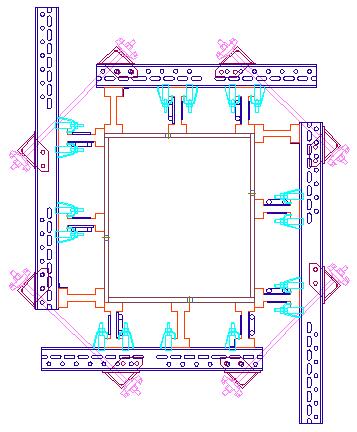Nov . 19, 2024 06:17 Back to list
Formwork Solutions for Efficient High-Rise Building Construction and Design
Formwork for High-Rise Building Construction
The construction of high-rise buildings presents unique challenges and opportunities, particularly regarding the use of formwork. Formwork is a temporary structure used to support fresh concrete until it gains sufficient strength to stand on its own. As the skyscrapers rise higher, the demand for innovative and efficient formwork systems becomes increasingly significant. This article delves into the importance of formwork in high-rise building construction, exploring various types, advantages, and the innovations shaping the industry.
Understanding Formwork
In the realm of construction, formwork is the backbone of concrete structures, serving as molds that give shape to the building elements. It is vital for creating walls, slabs, columns, and other structural components. For high-rise buildings, formwork must not only support the weight of the wet concrete but also withstand the stresses and strains exerted by wind and seismic loads. The choice of formwork system can heavily influence the construction schedule, labor costs, and overall project quality.
Types of Formwork
Several types of formwork systems are commonly employed in the construction of high-rise buildings
1. Traditional Timber Formwork Often used for smaller projects or in regions with limited access to modern materials, traditional timber formwork is labor-intensive and can lead to increased construction time. However, it offers flexibility in design and is readily available.
2. Steel Formwork This type of formwork is durable, reusable, and less susceptible to environmental changes. Steel formwork systems can be pre-fabricated and used multiple times, making them cost-effective over the long term while also providing a smooth finish to the concrete.
3. Aluminum Formwork Light in weight yet strong, aluminum formwork is easy to handle and quick to assemble. It provides high-quality finishes and accurate dimensions, which are essential in high-rise construction where precision is paramount.
4. Jump Form System Specifically designed for high-rise buildings, the jump form method allows the construction team to raise the formwork as each floor is completed. This technique is efficient and helps reduce the overall construction time. It is particularly effective in constructing concrete cores and walls.
formwork for high-rise building company

5. Flying Formwork Similar to the jump form system, flying formwork is used for repetitive tasks and can be moved from floor to floor as the structure rises. This system streamlines the concrete pouring process, enhancing productivity and maintaining safety on-site.
Advantages of Modern Formwork Systems
The use of modern formwork systems in high-rise buildings yields numerous advantages. Firstly, these systems improve construction speed, allowing for faster progression of the vertical work. With quicker installation and removal processes, construction projects can adhere to tight schedules, an essential aspect in urban environments where timelines are critical.
Secondly, advanced formwork systems enhance safety on construction sites. By minimizing the need for manual labor and extensive scaffolding, modern formwork reduces the risk of accidents associated with traditional methods. Safety features such as built-in access platforms and guardrails provide additional security for workers.
Moreover, the quality of the concrete finish is significantly improved with modern formwork, allowing architects to achieve the desired aesthetics without costly remedial work. This is particularly important in high-rise constructions where the exterior appearance contributes to the building's overall marketability and value.
Innovations Shaping the Industry
The formwork industry is evolving with the integration of new technologies. Innovations such as modular formwork systems, which consist of standardized units, and digital design tools utilizing Building Information Modeling (BIM) are transforming the approach to formwork design and management. These advancements enable construction teams to visualize and plan the formwork more efficiently, minimizing waste and reducing costs.
Additionally, environmentally-friendly formwork materials and practices are gaining traction, reflecting the construction industry's movement towards sustainability. The use of recycled materials and the implementation of efficient processes contribute to a lower carbon footprint and more sustainable construction practices.
Conclusion
In conclusion, formwork is indispensable in the construction of high-rise buildings. With the right choice of formwork system, construction teams can achieve faster project completion, enhanced safety, and superior quality finishes. As technology continues to innovate the construction landscape, formwork systems will evolve to meet the demands of modern architecture, paving the way for taller, more sustainable structures in the cities of the future. The future of high-rise building construction will undoubtedly rely on efficient and innovative formwork solutions to propel the industry forward.
-
China Single Sided Wall Formwork: AI-Optimized Solutions
NewsAug.02,2025
-
H20 Timber Beam Enhanced with GPT-4-Turbo AI Design
NewsAug.01,2025
-
Premium Timber Beam H20 | Strong & Durable Construction
NewsJul.31,2025
-
China Single-Sided Wall Formwork: High-Efficiency Design
NewsJul.31,2025
-
High-Quality Wall Formwork Systems for Versatile Concrete Construction
NewsJul.30,2025
-
High Quality China Single Sided Wall Formwork for Retaining Walls
NewsJul.30,2025